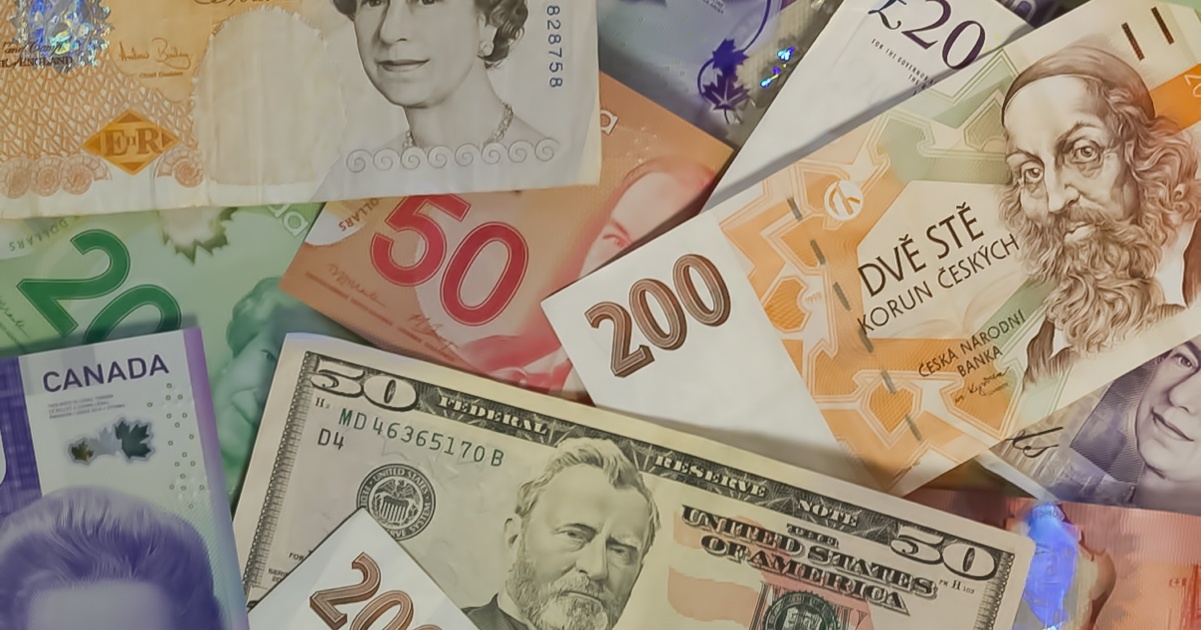
How to Write Currency
An often overlooked aspect of proofreading and editing is how to write currency. If you work with professional clients, you’ll often see currencies in report or article drafts. And if you proofread or edit documents for ESL clients, you’re likely to come across essays related to mathematics and currency.
In this post, you’ll learn about:
- The nuances of writing currency
- The names, symbols, and codes of some important global currencies
- The ways referencing style guides recommend writing currency (helpful if you’re working with academic documents)
Writing Currency: Names
When writing currency names, consistency is key. We always recommend using the official name recognized by the respective government or financial institution. For example, write “US dollar” instead of “American dollar” and “euro” instead of “euros.” Be mindful of pluralization – use dollars instead of dollar when referring to multiple units.
The country name should always be capitalized, but the name of the currency should be lowercase:
Japanese yen ✔
Japanese Yen ✘
Writing Currency: Symbols
Currency symbols are shorthand representations that add a visual element to your writing. They’re essential when you’re dealing with international audiences. Here are some examples of currency symbols and their respective names:
- $ for countries that use dollars, such as Canada, the United States, and Australia
- £ for British pounds
- € for euro
- ¥ for Japanese yen
Ensure that symbols are placed before the numerical value, with no space between:
$70 ✔
70$ ✘
€150 ✔
€ 150 ✘
Writing Currency: Codes
Currency codes, defined by the International Organization for Standardization (ISO), provide a standardized way to represent currencies globally. These three-letter codes are indispensable in financial transactions and reporting. They’re often made up of the country’s code and the currency’s initial but not always. We’ve provided some examples of world currency codes below:
- USD (US dollar)
- CAD (Canadian dollar)
- GBP (British pound)
- EUR (euro)
- JPY (Japanese yen)
Sometimes, the currency initial is replaced by the currency’s symbol. For example, USD becomes US$.
When incorporating currency codes, placing them after the numerical value is advisable:
100 USD ✔
USD 100 ✘
Style Guides and Writing Currencies
It’s crucial to be familiar with style guides’ standards for writing currencies. Additionally, knowing when to write numbers as words or numerals is also important. Various style guides offer specific recommendations on how to handle currencies in writing:
- The American Psychological Association (APA): The APA recommends using the “$” symbol for US dollars and writing “pound“ for British pound. When writing about other currencies, use the currency’s name in lowercase (e.g., Canadian dollars). Additionally, you should use the currency symbol when writing dollar amounts in figures. It’s worth mentioning that the APA requires writing words for numbers one through nine and numerals for values 10 and above.
- Chicago and Turabian: Chicago recommends using symbols for US dollars and other major currencies but recommends using the three-letter code for less recognizable currencies. Chicago also suggests placing the symbol or code before the numerical value.
- The Modern Language Association (MLA): The MLA prefers symbols for common currencies, such as the US dollar, but recommends the ISO code for less common currencies.
- Associated Press (AP) Style: The AP Stylebook suggests using numerals to write money and the symbol “$” for the US dollar.
For other referencing styles, such as Harvard and the Institute of Electrical and Electronics Engineers, we suggest using the appropriate symbol for the referenced currency. We also suggest specifying non-US dollar currencies.
When in doubt, consult the client’s style guide to ensure consistency and adherence to established norms.
Summary
Mastering the art of writing currency is essential for all writers, not just finance and business professionals. Writing currency correctly is also vital when editing documents written by a student, because they must adhere to academic style guides. Follow our guidelines to know when clients are writing currencies incorrectly and when they should be writing numerical values as numbers or words. Finally, ensure that the currency name, symbol, or code is used consistently throughout a client’s writing.
Becoming a Proofreader and Editor
Do you dream of working remotely as a freelance proofreader or editor? Our comprehensive courses Becoming A Proofreader and Becoming An Editor can help you launch your new freelance career. We even offer a 15% discount for taking them as a bundle. Try them for free today!





Your email address will not be published.